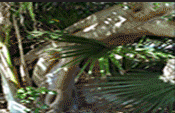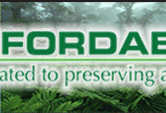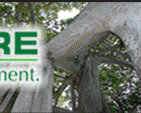|
A: The International
Society of Arboriculture (ISA) was founded in 1924 and has
served the tree care industry for over seventy years as a
scientific and educational non-profit organization. ISA supports
tree care around the world and is dedicated to the care and
preservation of shade and ornamental trees. This organization
continues to be a dynamic medium through which arborists around
the world share their experiences and knowledge for the benefit
of society. Aligned on many fronts with other green
organizations, ISA is working hard to foster a better
understanding of trees and tree care through research and the
education of professionals as well as global efforts to inform
tree care consumers.
For more
information, please visit http://www.isa-arbor.com/about/about.asp.
A: Arborists are
trained professionals that are knowledgeable and equipped to
provide proper tree care. They are specially trained to provide
a variety to services to maintain trees. ISA Certified Arborists
are individuals who have achieved a level of knowledge in the
art and science of tree care through at least three years of
experience and have passed a comprehensive examination. They are
also required to continue their education in order to maintain
their certification, ensuring their knowledge is updated on the
latest arboriculture techniques. ISA Arborist Certification is a
non-governmental voluntary process that operates without mandate
of law. It is an internal self-regulating device administered by
the International Society of Arboriculture, and therefore,
cannot guarantee or assure the quality of performance.
Certification provides a measurable assessment of an
individual’s knowledge and competence required to provide
proper tree care.
To locate an ISA
Certified Arborist near you or to obtain additional information,
please visit http://www.isa-arbor.com/findArborist/findarborist.asp
or contact ISA at (217) 355-9411.
A: Trees restore
natural harmony in an urban environment, giving scale to human
life. Trees are alive, like us, and require an investment and
continuous maintenance in order to provide the maximum desired
benefits. Some benefits include:
-
Air Filtration― filters out
particulate matter and absorbing harmful gases
-
Purifies Water― slows and
filters rain water and protects aquifers & watersheds
-
Cost Reduction― reduces yearly
heating and cooling costs by 2.1 billion dollars
-
Climate Control― obtained by
moderating the effects of sun, wind, and rain
-
Increase Property Value―
well-cared landscape properties are 5-20% more valuable than
non-landscaped estates.
For a healthy and long
life, trees need the proper maintenance. Therefore, in order to
provide proper tree care, you should refer to a certified
arborist.
For more information on
why hiring an arborist, please visit http://www.treesaregood.com/treecare/Hire_Arborist.asp.
A: To find an ISA
Certified Arborist near you, please visit http://www.isa-arbor.com/findArborist/findarborist.asp
and type in your zip code to obtain a list of certified
arborists in your area. If you do not have access to the
internet, you may contact ISA at (217) 355-9411 to have a
list mailed to you.
A: You may obtain
additional information from your local ISA Certified Arborist,
tree care professional, garden center, community forester, etc.
by referring to your local yellow pages or visiting this site
for a wide-range of tree-related topics.
A: Trees provide a
variety of benefits besides environmental, such as social,
community, and economic. Trees provide an array of benefits,
including:
-
Cost Reduction― reduces yearly
heating and cooling costs by 2.1 billion dollars
-
Increase Property Value―
well-cared landscape properties are 5-20% more valuable than
non-landscaped estates.
-
Privacy and Scenery, aesthetic
values
The following facts are
results from studies conducted by UIUC Human-Environment
Research Laboratory:
-
Fewer Crimes― apartment
buildings surrounded by trees and greenery are dramatically
safer than buildings devoid of green
-
Improves Concentration- children
with Attention Deficit Disorder (ADD) are relieved after
contact with nature. The greener the setting, the more the
relief.
-
Sound Barrier- acts as sound
barriers and provide protection against crowding, noise, and
danger, which all can contribute to mental fatigue, and can
help inner-city residents cope with the many poverty
related-stresses
For more information on
the benefits of trees, please visit
http://www.treesaregood.com/treecare/tree_benefits.asp
and http://www.treesaregood.com/treecare/tree_values.asp.
A: Tree selection is
one of the most important investment decisions for a homeowner.
First, examine the location conditions of where you want your
tree to be planted. Take the following into consideration before
selecting the tree species you want:
-
Amount of space
-
Clearance from overhead and
underground utilities
-
Weather conditions
-
Tree functions you desire
-
Exposure to sun and wind
-
The quality
Then, utilize the
information you have gathered and select the tree species that
works best with the conditions. For assistance, contact your
local ISA Certified Arborist, tree care professional, or garden
center to plant the right tree in the right place.
For more information on
selecting and purchasing trees, please visit
http://www.treesaregood.com/treecare/tree_selection.asp
and http://www.treesaregood.com/treecare/buying_highquality.asp
A: Location conditions
are extremely important and vital to a tree’s health. Be sure
to examine the tree location conditions and follow these steps
when planting your new tree:
-
Dig a shallow, broad hole: only as
deep at the root ball, but 3x’s as wide in diameter
-
Identify the trunk flare: this is
where the roots spread at the base of the tree. This should
be partly visible after planting.
-
Place the tree at the proper height:
majority of the roots should be within 12” of the soil.
-
Straighten the tree in the hole
-
Fill hole, gently but firmly
-
Stake the tree, if necessary
-
Mulch the base of the tree
-
Maintain with follow-up care
For more information on
tree planting, please visit
http://www.treesaregood.com/treecare/tree_planting.asp.
A: The type and
frequency of tree care depends on the species, age, location,
climate, and other factors that affect the tree’s growth. The
first step is to educate yourself about your trees and
understand their needs. It is imperative to understand that
proper tree care is a life long process, and that planting and
caring for a tree is a long-tern commitment, not just a one time
deal. Contact your local tree care professional for proper
assistance.
For more information on
proper tree care, please visit
http://www.treesaregood.org
for a wide-range of quality arboriculture information.
A: Pruning is the
cutting or removing branches or parts of trees or for improving
the shape or growth of trees. This is the most common tree
maintenance procedure. Usually, trees are pruned preventative or
as a corrective measure to remove dead branches, crowded or
rubbing limbs, eliminate hazards, and increase light and air
penetration. Since each cut to a tree has the potential to
change the growth, it is important to educate yourself,
considering no branch should be removed without any reason.
or more information on
pruning the proper techniques, please visit
http://www.treesaregood.com/treecare/pruning_young.asp
for young trees and http://www.treesaregood.com/treecare/pruning_mature.asp
for mature trees.
A: Topping is the
indiscriminate cutting of tree branches to stubs or lateral
branches that are not large enough to assume the terminal role.
Other names for topping including “heading,” “tipping,”
“hat-racking,” and “rounding over.”
Topping is perhaps the
most harmful tree pruning practice known. It is usually done to
reduce the size of a tree. Often, homeowners top their trees
because they feel that they have become too large for their
property and are a hazard. However, topping will make a tree
more hazardous in the long term and is very harmful to the
health of a tree.
For more information on
topping, visit
http://www.treesaregood.com/treecare/topping.asp
A: Mulches are
materials placed over the soil surface to maintain moisture.
Mulching is extremely beneficial to trees. It can reduce water
loss from soil, minimize weed competition, and improve soil
structure. Properly applied, mulch gives landscapes a health
dose of benefits for your trees.
For more information on
proper mulching techniques, please visit
http://www.treesaregood.com/treecare/mulching.asp
.
A: As soon as you
notice any abnormality in your tree’s appearance, you should
begin a careful examination of the problem. Insects and diseases
can threaten a tree’s health. By identifying the specific
symptoms of damage and understanding the causes, you may be able
to diagnose the problem and take appropriate actions for
treatment. You should contact a tree care professional for
assistance immediately.
For more information on
insect and/or disease symptoms, diagnosis, causes, and
treatment, please visit
http://www.treesaregood.com/treecare/insect_disease.asp
.
A: Trees are essential
to our world, offering a wide range of benefits to our
environment. However, trees become hazardous liabilities if they
fall and injure people or damage property. Proper constant
maintenance will help prevent and identify when a tree becomes
dangerous. Evaluating the seriousness of a trees condition is
best done by a professional ISA Certified Arborist.
For more information and
tips for identifying hazardous trees and its defects, please
visit
http://www.treesaregood.com/treecare/hazards.asp
A: Please contact ISA
to obtain additional information on arboriculture (tree care)
related topics. We will be happy to assist you!
International Society of
Arboriculture
P.O. Box 3129
Champaign, IL 61826-3129, USA
Phone: (217) 355-9411
Fax: (217) 355-9516
|






